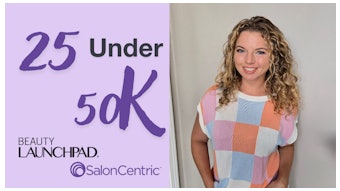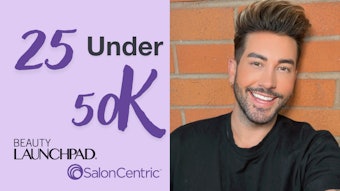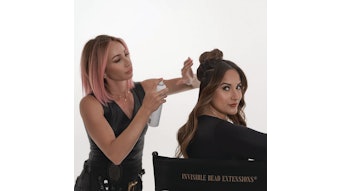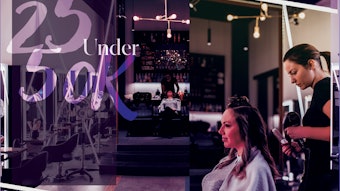
TikTok has transformed the beauty industry into a platform-driven landscape, where short-form content entertains, educates and drives consumer behavior, according to a wide-ranging report from Spate x YipitData. Virality-driven brands, often born or accelerated on TikTok, use creator partnerships, unfiltered tutorials, and digital fluency to quickly build trust and gain massive visibility. These brands thrive on speed and relatability, breaking into top engagement rankings and leveraging the platform to turn attention into real-world sales at an unprecedented pace.
Log in to view the full article
TikTok has transformed the beauty industry into a platform-driven landscape, where short-form content entertains, educates and drives consumer behavior, according to a wide-ranging report from Spate x YipitData. Virality-driven brands, often born or accelerated on TikTok, use creator partnerships, unfiltered tutorials, and digital fluency to quickly build trust and gain massive visibility. These brands thrive on speed and relatability, breaking into top engagement rankings and leveraging the platform to turn attention into real-world sales at an unprecedented pace.
"The brands that convert short-term buzz into lasting market share have been staying relevant by continuously launching products in exciting new formats or alongside new innovative techniques," says Yarden Horwitz, cofounder of Spate. "They pair these launches with strategic influencer partnerships to create momentum, amplify reach and keep consumers engaged beyond the initial viral moment."
Performance Over Personality?
 "Having a founder with star power—as in Hailey Bieber’s case—can accelerate awareness, especially when paired with timely product launches tied to trends and aesthetics," says Yarden Horwitz of Spate.nikkimeel
"Having a founder with star power—as in Hailey Bieber’s case—can accelerate awareness, especially when paired with timely product launches tied to trends and aesthetics," says Yarden Horwitz of Spate.nikkimeel
"Yes and no," says Horwitz. "Having a founder with star power—as in Hailey Bieber’s case—can accelerate awareness, especially when paired with timely product launches tied to trends and aesthetics. But it’s not a prerequisite for success. Today, faceless brands can achieve similar impact by introducing innovative product formats or techniques and leveraging influencers and micro-influencers to tell that story at scale."
An analyst from YipitData adds, "In 1H 2025, Sephora makeup share shifts show that being founder-led isn’t enough—performance now matters more than personality. While Huda Beauty and One/Size gained share Y/Y, founder-forward brands like Rare Beauty and Charlotte Tilbury lost ground."
How Viral Beauty Brands Can Thrive with Omnichannel Strategies
 To sustain success, viral brands must adopt omnichannel strategies, blending online dominance with physical retail presence. Ron Lach at Pexels
To sustain success, viral brands must adopt omnichannel strategies, blending online dominance with physical retail presence. Ron Lach at Pexels
To sustain success, viral brands must adopt omnichannel strategies, blending online dominance with physical retail presence. Platforms like Amazon provide unmatched reach and convenience for early momentum, while partnerships with retailers like Sephora and Ulta help expand visibility and build long-term growth. By meeting consumers across both digital and physical channels, brands can maximize reach and maintain relevance in a competitive market.
Cross-category Dynamics: Insights from Spate x YipitData
The Spate x Yipitdata research offers cross-category insights, including for hair, makeup, skin care and fragrance. To learn more, Global Cosmetic Industry reached out to the Spate and YipitData teams to understand how specific category dynamics are impacting results.
Here's what we learned.
Influencers vs. Doctors: Who’s Winning the Beauty Battle on Social Media?
 "While virality-driven brands such as Anua and Medicube (pictured) have aligned themselves with medical professionals ... their momentum is being fueled by influencer partnerships and eligible-for-commission microinfluencer content," says Yarden Horwitz of Spate.
"While virality-driven brands such as Anua and Medicube (pictured) have aligned themselves with medical professionals ... their momentum is being fueled by influencer partnerships and eligible-for-commission microinfluencer content," says Yarden Horwitz of Spate.
"While virality-driven brands such as Anua and Medicube have aligned themselves with medical professionals (Anua has this top trending video, and Medicube has brought in their own medical pros to discuss issues), their momentum is being fueled by influencer partnerships and eligible-for-commission microinfluencer content," says Horwitz. "This suggests that scale and reach can ultimately outweigh the impact of medical endorsements.
K-Beauty Goes Beyond Skin Care: Fun, Flawless and Foundation Wins
K-beauty brands compete extraordinarily well in skin care. This has been less true for makeup, where many Korean labels have struggled. But there are exceptions.
 An analyst from YipitData adds, "Brands like TirTir demonstrate that with the right mix of innovation, aesthetic appeal and platform-driven discovery, K-beauty can thrive in makeup too—especially in complexion products that align with their skin care roots."TirTir
An analyst from YipitData adds, "Brands like TirTir demonstrate that with the right mix of innovation, aesthetic appeal and platform-driven discovery, K-beauty can thrive in makeup too—especially in complexion products that align with their skin care roots."TirTir
The analyst from YipitData adds, "Brands like TirTir demonstrate that with the right mix of innovation, aesthetic appeal and platform-driven discovery, K-beauty can thrive in makeup too—especially in complexion products that align with their skin care roots."
The analyst adds, "Our data shows that TirTir gained ~7 pts YoY from April 2024 to April 2025 in foundation market share at Amazon (1P & 3P). The playbook is evolving, and more K-beauty entrants may follow suit."
From SkinTok to HairTok: What Hair Care Brands Can Learn to Shine
 "Over the years, SkinTok has shifted from before-and-after content to ingredient efficacy, derma-backed authority, and—as seen with Medicube and Anua (pictured)—influencer partnerships and commission-eligible content," says Yarden Horwitz of Spate.Anua
"Over the years, SkinTok has shifted from before-and-after content to ingredient efficacy, derma-backed authority, and—as seen with Medicube and Anua (pictured)—influencer partnerships and commission-eligible content," says Yarden Horwitz of Spate.Anua
"The hair category looks to be mirroring skincare’s content evolution," says Horwitz. "Karseell’s before-and-after videos recall early-pandemic viral hits like the Green Tea Face Mask Stick, but with a seemingly more credible and effective product. Over the years, SkinTok has shifted from before-and-after content to ingredient efficacy, derma-backed authority, and—as seen with Medicube and Anua—influencer partnerships and commission-eligible content."
She adds, "While brands like Wavytalk are leveraging some of these strategies, brands like Karseell have a clear opportunity to adopt them to expand reach and sustain growth."
From Dupes to Curiosity: How Fragrance Brands Are Scenting Success
 "While dupes perform well on TikTok, consumer interest can also be driven by curiosity," says Yarden Horwitz of Spate.Ron Lach at Pexels
"While dupes perform well on TikTok, consumer interest can also be driven by curiosity," says Yarden Horwitz of Spate.Ron Lach at Pexels
"While dupes perform well on TikTok, consumer interest can also be driven by curiosity," says Horwitz. "Fragrances like pheromone perfume went viral as consumers wondered how the scent would smell on them personally. Brands can tap into this curiosity by partnering with influencers to challenge audiences to try the scent themselves — turning it into a question to answer or an experience to share."
She adds, "This approach is already highly effective in the food industry, where consumers feel compelled to taste new products or flavors and record their reactions."










